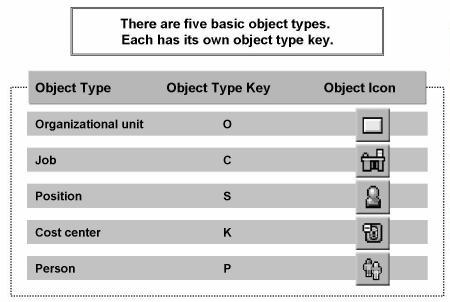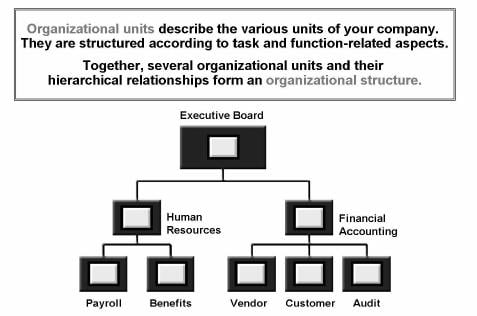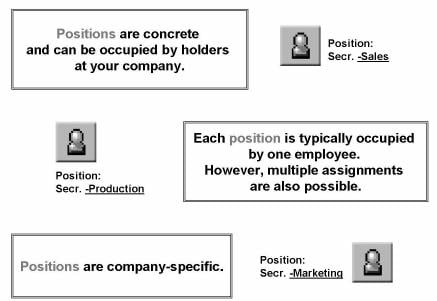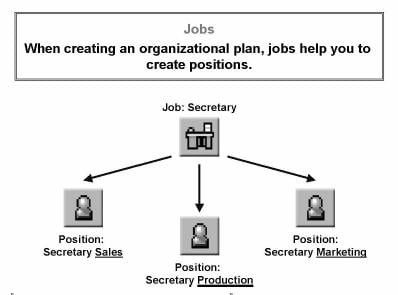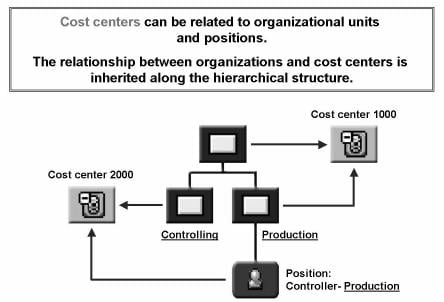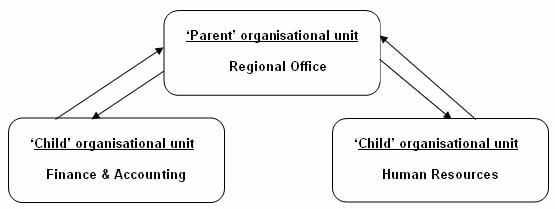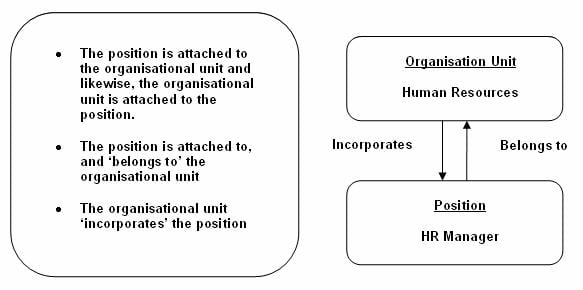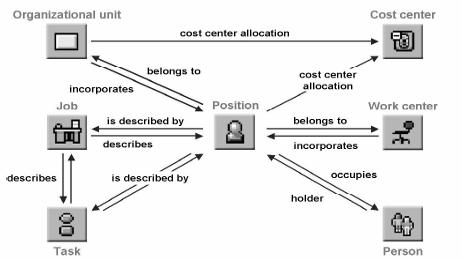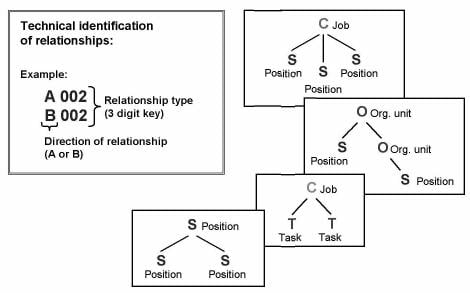Learn Organizational Management (OM) in SAP HR
OM Module of SAP HR
- Object Types Entities within OM are maintained as object types (e.g. Org Units, positions, jobs)
- Relationships Links objects together (e.g. person to position, position to Org Unit)
- Validity Dates Validates life span of objects
- Infotypes Data input screens used to record relevant information
Object Types
Each aspect of OM is recorded as an object type, a way of grouping similar data together. For example, organizational unit is an object type, position is another object type.
Relationships
There are many objects within OM, and the creation of relationships is the way that data is linked together. When you build the hierarchical organizational structure, you are creating a relationship between organizational unit objects. If you attach a position to an organizational unit, you are creating a relationship between the position object and the organizational unit object.
Validity Dates
Whenever you create an object or a relationship between objects, you must enter start and end dates. These validity dates ensure that data entries can only be made within a specified lifespan.
Infotypes
These are the data input screens used to record the OM information. Some infotypes are automatically updated ‘behind the scenes’; other infotypes require you to manually input the information.
Lets look into the different OBJECT TYPES in detail
OM is based upon the use of Object Types and Relationships. Object Types group similar data together. Although an organizational plan can consist of many object types, the five basic building block object types and their ‘codes’ are as follows:
- The Personnel Administration (PA) module of the SAP HR system holds the person related data in infotypes in the master data file.
- The Organization Management (OM) module looks at the organization’s departmental structure and holds the data in object types. OM object types are a way of grouping similar data. The system assigns a code for each object type.
- These objects are created and maintained separately and are then linked together using relationships.
Organizational unit
- Object type O is used for Organizational Unit.
- Organizational units are units of your company that perform a function.
- These units can be departments, groups or project teams, for example.
- You create the organizational structure of your company by relating organizational units to one another.
- The organizational structure is the basis for the creation of an organizational plan.
Position
- Object type S is used for Position.
- Positions are used to distribute tasks to different positions and to depict the reporting structure in your organizational plan.
- Positions are concrete and are held by employees in a company.
- Positions are assigned to organizational units and can inherit characteristics from a job.
Job
- Object type C (classification) is used for Job.
- Positions are held by people in the company (e.g. secretary in the marketing department, HR manager). Jobs, in contrast, are classifications of functions in an enterprise (e.g. secretary, manager), which are defined by the assignment of tasks and characteristics.
- Jobs serve as job descriptions that apply to several positions with similar tasks or characteristics. When you create jobs, they are listed in a job catalog.
- When you create a new position (e.g. secretary in the marketing department), you can relate it to a job that already exists in the job index (e.g. secretary). The position then automatically inherits the tasks and characteristics of the job. This significantly reduces data entry time, as tasks and characteristics do not have to be assigned to each position separately, instead they are inherited via the descriptive job. Note however, that specific tasks and characteristics can also be assigned directly to positions.
Jobs are also important in the following components:
- Personnel Cost Planning
- Career and Succession Planning
- Compensation Management
When you create jobs, they are listed in a job catalog. A job catalog is a list of jobs maintained for an enterprise.
Cost Center
- Object type K is used for Cost Center.
- Cost centers are a Controlling/Finance item that represents the origin of costs. Cost center are external from OM and will be created and maintained in the Controlling module. Cost centers can have relationships with either organizational units or positions.
- Cost center assignments are inherited along the organizational structure.
Person
- Object type P is used for Employee.
- A person is generally an employee in the company who holds a position.
- Additional information for employees is maintained in PA (e.g. address, basic pay, etc.).IT0001 (Organizational Assignment) contains the position assignment, defining job, organizational unit, and cost center assignment.
Other noteworthy Object Type is TASKS
- Object Type T is used for tasks
- Tasks are individual duties and responsibilities that must be undertaken by employees
Tasks can be clubbed under two headings
- As part of workflow
- As part of personnel management to describe jobs and positions
How SAP HR organization works as a single unit
Relationships
We need to look at two types of Relationships in SAP
1.Relationships with same Object Types
2.Relationships with different Object Types
Lets look into them in detail –
Relationships with Same Object Types
- Organizational units are related with each other to form a hierarchical structure.
- Each organizational unit is created as an individual object type. Using the example above, the organizational unit of “Region Office” is an object type, as are the organizational units of Finance & Accounting and Human Resources.
- To create the interrelated hierarchy, a relationship must exist between Regional Office and Finance & Accounting and between Regional Office and Human Resources.
- Relationships are formed in both directions, therefore Regional Office incorporates Finance & Accounting and Finance & Accounting belongs to the Regional Office.
- When you create a relationship between objects, SAP automatically creates the corresponding reverse relationship.
Relationships with Different Object Types
- Any SAP organizational unit will have positions attached to it. The organizational units object would therefore be linked the position object types as a relationship.
- In the example detailed above, the organizational unit object of Human Resources has a relationship of ‘incorporates‘ with the position object of HR Manager, therefore the position object of HR Manager has a relationship of ‘belongs to‘ with the organizational unit object of Human Resources.
Common relationships
- Objects are linked though relationships.
- You create relationships between the individual elements in your organizational plan. Several linked objects can represent a structure. There are different types of relationships, as the type of connections between elements varies

